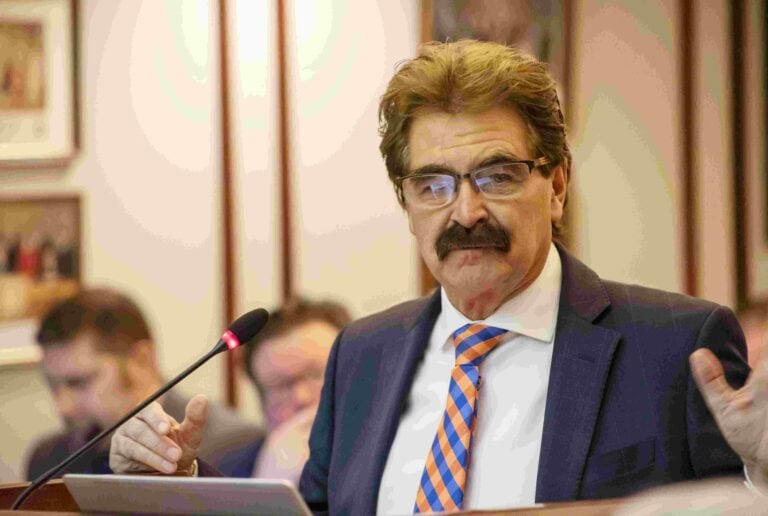We opened the month of February under the threat of tariffs issued by U.S. President Donald Trump’s executive order. Then, by 5 p.m. on Feb. 3, we got a 30-day “stay of execution.”
But make no mistake, this is only Trump’s opening salvo in a four-year battle.
Read his book “Trump: The Art of the Deal” and you will understand that if you show weakness, if you give him a lever, he will use it without mercy to get whatever he wants — preferably, everything you’ve got.
Should the status quo be maintained in this country — inter-provincial trade barriers, no EU trade deal, lack of east-west pipelines for Alberta and Saskatchewan, etc. — and we attempt to appease Trump, we will suffer “death by a thousand cuts.”
We must act now, united, politics aside, to protect Canada’s sovereignty.
That said, I cannot say how proud the people of this wonderful country have made me feel in the two days between Feb. 1 and 3.
Vive le Canada — strong and free.
Now, let’s shift our focus from the international theatre back to our wee little town where, for the past several months, three individuals — two eminently qualified engineers and an internationally recognized expert on water resource management — have been toiling selflessly in an attempt to educate both council and staff on the probable downsides of the proposed Parliament Oak hotel vis-à-vis our infrastructure.
We will not revisit the issue that the developer’s engineering firm, R.V. Anderson Associates, disclaimed all liability for any decisions made by a third party (including the town) since it has been covered in this publication before (“Engineering reports used to approve zone changes for Parliament Oak under scrunity,” Nov. 7).
Nor will we wonder why this firm used a two-year design storm rather than the current five-year storm required by NOTL’s current municipal engineering standards and ignored section 6.2, which prohibits new storm sewer outlets to be connected to existing storm sewers.
Instead, let’s consider just where all the new, additional water (and there will be significantly more) is going to be directed: One Mile Creek.
R.V. Anderson identifies One Mile Creek as a “watercourse,” implying it is capable of handling the increased flow of stormwater and the water output resulting from dewatering processes required to protect the proposed underground garage. A proper 100-year-storm has not been considered in the report.
As anyone who has ever walked this watercourse knows — due to sedimentation, obstructions, undersized culverts, etc. — this proposition is ridiculous and will inevitably result in exacerbating the already extensive flooding events that properties bordering the creek periodically suffer from.
These observations are echoed and underwritten by the three experts petitioning the town.
Moreover, case law in Ontario suggests water “cannot by artificial drains or ditches” be collected and moved downgradient to the “downgradient property owner’s injury.”
So, one has to wonder just who will be sued when the inevitable downstream flooding occurs?
I suppose if the stormwater drain pipe were to be constructed and paid for by the property developer, the owner, then the liability would rest on them.
However, should the municipality construct and own that pipe, legal experts opine that the town could bear all or a part of that liability.
The town could, at an astronomical cost, correct all the existing issues with the One Mile Creek natural watercourse — provided the Niagara Peninsula Conservation Authority and property owners along the creek agree — to allow it to safely manage the increased water to the 100-year-storm criteria.
Or, at any even higher ticket price, make One Mile Creek a municipal drain, re-engineer its water handling capacity and be on the hook for the annual maintenance requirements.
While our three experts have met with limited success in educating members of the town council, during a recent meeting with town staff, they were able to get a commitment to pass their multiple concerns on to the firm, Associated Engineering, that is conducting the peer review of the R.V. Anderson report.
I do hope that commitment transpires.
And, let’s end this week with a fun fact regarding water and infrastructure.
As a result of the Walkerton water debacle 25 years ago, Ontario passed two pieces of legislation — the Safe Drinking Water Act 2002 and the Clean Water Act 2006 — specifically crafted to protect the province’s drinking water and the source water it is derived from.
Contained in the legislation is the conveyance of personal liability onto elected municipal officials and staff in the event actions taken by the municipality adversely affects either drinking water or the source water.
A fact that should be considered when infrastructure decisions are being made.
Brian Marshall is a NOTL realtor, author and expert consultant on architectural design, restoration and heritage.










